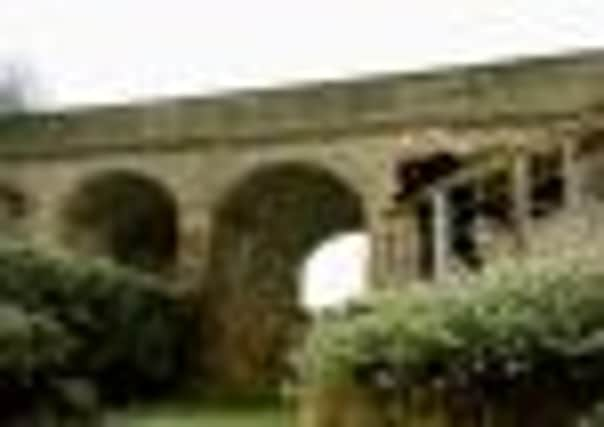Des res convenient for railway (there’s a viaduct in the garden)


Bang slap in the middle, between the veg plot and the barbecue, is a 35ft high viaduct, which is part and parcel of the property in the village of Spofforth, near Wetherby.
The redundant railway bridge is hidden behind the standard four-bedroom detached and most visitors to the quaint cul-de-sac don’t even realise it exists.
Advertisement
Hide AdAdvertisement
Hide AdEstate agent Paul Baxter, of Dacre, Son and Hartley, which is marketing the house at £450,000, was certainly surprised when he saw it.
“It took my breath away. I’ve been in the business for years and I have never seen anything like it. It’s absolutely amazing,” he says.
The Victorian viaduct was a big selling point for Mike and Liz when they bought the house 30 years ago.
It was built in 1848 when the York and North Midland railway opened from Church Fenton to Harrogate. The line was one of the first to be axed by Beeching in the 1960s. But although the track has disappeared, the bridge and its five stone arches remain. Although it is not listed, it is considered to be a fine specimen of 19th century railway engineering.
Advertisement
Hide AdAdvertisement
Hide Ad“We were relocating from South Manchester and we looked at loads of properties between Leeds and York. Spofforth is a lovely village with a fantastic school and the house was family-sized, but it was the garden that really sold it to us,” says Mike, a retired typographer and advertising designer.
“We thought the viaduct was great, although people still don’t quite believe us when we say we’ve got a railway bridge in the garden.”
The unusual extra was added when the previous owner bought a third of an acre from a local landowner. The idea was to demolish the viaduct and use the stone to build another house, but access was an issue and planners refused to allow the demolition of the historic structure.
“The land was completely overgrown and each side of the railway bank was full of brambles and hawthorn trees, but we could see that the plot had fabulous potential,” says Mike.
Advertisement
Hide AdAdvertisement
Hide AdHe and Liz spent years creating a sensational, low-maintenance garden that stretches over three levels. It involved moving tons of earth and boulders to lower the steep banking. During one excavation, they discovered an unexploded mortar bomb.
“I created chutes to take the rubble and soil away and threw what turned out to be a bomb down one of them. I realised that it didn’t look right and I called the police. The Army came and took it away, which was very exciting for our son Leo, who loved playing soldiers.”
It is thought that the bomb fell from one of the trains taking munitions to a special dump created at Thorpe Arch after the Second World War.
Undeterred, Mike and Liz continued. They built stone walls and steps, created a barbecue area, vegetable plot and dug out another 60 tons of earth to make a decked terrace with a summer house overlooking the stream at the bottom of the garden.
Advertisement
Hide AdAdvertisement
Hide AdThey also planted succulents that sprout yellow flowers under the railway arches and installed spotlights that shine on the rugged, black stone.
The couple are selling their much-loved family home to move closer to their grandchildren in Lincolnshire.
“We will miss it and we hope it will go to another family who will love the garden,” says Liz.
• For details visit www.dacres.co.uk. The viaduct can be seen from the grounds of Spofforth Castle.